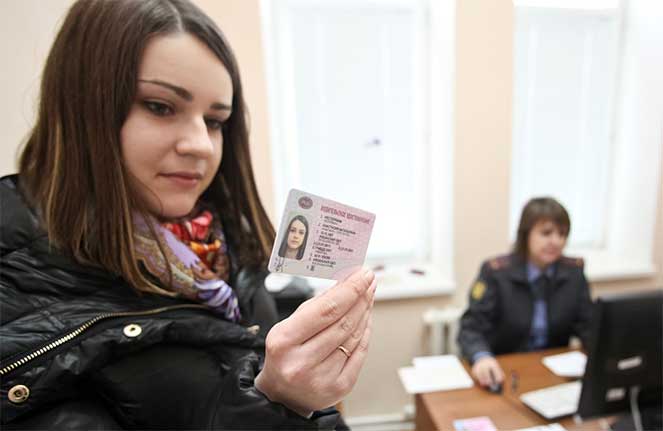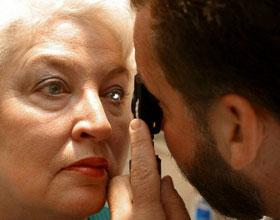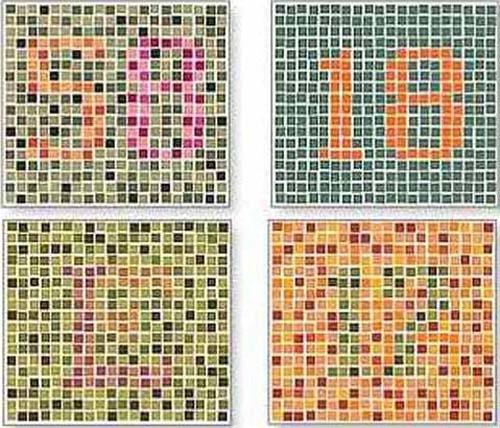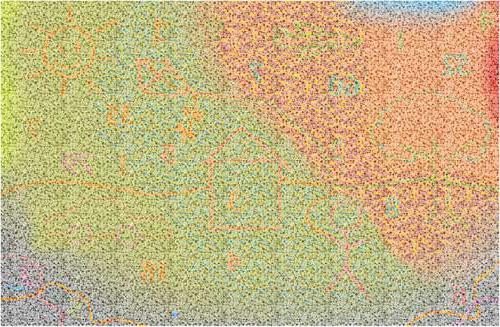Are color blind people given a driver's license? Color blind people will be allowed to drive
Receiving procedure driving license in Russia starts with passing medical commission... And for those who have contraindications for driving for health, it ends there. Among the diseases that traditionally involved at least significant restrictions on the ability to drive, in particular, is color blindness. Therefore, a problem such as color blindness and a driver's license in 2017 deserves detailed consideration.
Color blindness is a deep pathology of vision, manifested in the inability of a person to distinguish between certain colors. This is the reason for the medical contraindications and restrictions associated with the admission behind the wheel of a person suffering from such an ailment. Such people are believed to be a potential source of emergency danger due to problems with the recognition of traffic signals.
For their part, opponents of the restrictions argue that those who suffer from myopia have even more problems in this regard, and this category of those who want to get the rights has a much greater chance of realizing their intentions.
The structure of the retina includes receptors that are responsible for recognizing different colors - green, blue and red (the rest are the result of mixing the named ones). The receptors perform this function due to the presence of a special pigment. If it is not produced enough or not at all, problems begin, which result in problems with color discrimination.
Basically, this pathology is congenital and is often transmitted to the child from the mother, who herself may not have such problems. It also happens that color blindness develops as a consequence of eye injuries and diseases.
In total, in Russia, according to statistics from the Ministry of Health of the Russian Federation, 8% of men and 0.5% of women suffer from color blindness.
What the law sets
Since the beginning of 2012, the order of the Ministry of Health of the Russian Federation No. 302n of April 12, 2011 came into force. It is he who now determines whether the color anomaly and driver's license are compatible in 2017. And I must say that the situation of Russians suffering from color blindness was significantly worsened by this document.
Until 2012, they had at least some chances, since the definition of the depth of the pathology and the possibility of admission to driving the vehicle in connection with it was determined by the ophthalmologist during the examination. In practice, color-blind people usually have no problems opening categories “A” (motorcycles) and “B” (cars).
Restrictions were practiced only with dichromasia. This type of disease deprived the driver of the opportunity to earn a living in such a profession, but did not exclude the possibility of driving a personal car or motorcycle.
Dichromasia doctors call a type of color blindness in which the patient is completely unable to distinguish one of the colors.
Dichromasia and a driver's license in 2017 are completely incompatible, but now those suffering from this type of disease are on an equal footing with Russians exposed to other forms of it.
With the entry into force of the above order, the ability to drive vehicles was closed to all applicants. driving license who have been diagnosed with color blindness.
Those who managed to obtain a driver's license before the order began to be effective turned out to be in a better position: not only no one is going to deprive them of their license, but they will not have any problems with their extension or replacement and passing repeated medical examinations. 
How the vision of future drivers is tested
Color blindness tests are an integral part of the professional examination of the future driver in the ophthalmologist's office. To diagnose color blindness, special color tables are used. Depending on what the patient sees on them and whether he sees any meaningful images at all (usually numbers and figures), the ophthalmologist draws conclusions about the presence or absence of the named pathology. As a rule, there are 27 such tables.
What is important for the future driver to know - there are some stringent requirements for the procedure for such testing:
- during the procedure, the window should be located behind the patient's back;
- tables should be placed strictly at eye level at a distance of one meter from the patient;
- the doctor should show each table within 5-7 seconds;
- testing is carried out only in natural light;
- it is unacceptable to carry out procedures if the patient's temperature is higher than normal or other symptoms of certain diseases are present.
If any of these requirements are violated, the future driver has the right to challenge the diagnosis, which in 2017 actually sounds like a sentence.
The cost of the procedure
If a professional examination of a future driver is carried out in a municipal clinic, he does not have to pay anything, it is enough to have a compulsory medical insurance policy. In paid clinics, the total cost driver's certificate automatically includes all the procedures provided for by law, and you do not need to pay extra for anything.
If desired, the color blindness test can be passed separately - before contacting medical institutions for a driver's certificate. Depending on the region and the pricing policy of a particular medical center, this service will cost an average of 0.5 thousand to 2 thousand rubles.
Different categories of color blind
Doctors distinguish three types of color blindness, depending on which colors the patient has problems with:
- Deiranopia is the patient's inability to perceive the color green. Instead, such patients see orange and pink. Of course, when it comes to traffic signals, they can be recognized by their location. However, supporters of restrictions for this category of patients insist that there are different situations on the road: in low light or in a stressful situation, it can be difficult to assess the location of the signal, and its color becomes key. Confusing color signals is fraught with dangerous consequences not only for the color blind person himself, but also for other road users. However, until 2012, deiranopia and a driver's license were considered quite compatible.
- It is customary to call pronatopia the inability to distinguish between red. His patient perceives it as dark green or brown. The inability to distinguish red from green, that is, the main traffic signals, has become a decisive argument in favor of those who argue that pronatopia and a driver's license are at least a dangerous combination.
- Dichromasia, as mentioned above, is a complete inability to distinguish one of the colors. This is the most severe form of color blindness, which implied restrictions until 2012, when the approach to issuing color blind people with a driver's license was more liberal.
After all that has been said, the answer to the question of whether color blind people can get a driver's license, alas, is obvious: they have no legal opportunity for this. The question of how justified and fair this state of affairs is, remains, of course, debatable. However, as of 2017, the state, represented by the Ministry of Health of the Russian Federation, which issued the above-mentioned order, clearly outlined its position on this issue, and there are no plans to revise it. 
Meanwhile, in many foreign countries, the question of whether a driver's license is given to color blind people has a radically opposite answer. In particular, in a number of European countries, the inability to distinguish colors is generally not considered a contraindication for admitting a person to drive a vehicle. So Russians with color blindness have a theoretical opportunity to get around this limitation. The legislation of the Russian Federation allows its citizens to enjoy foreign rights, including in Russia. Problems can arise only when they are exchanged for Russian ones, since for this it will be necessary to pass a medical examination.
However, nothing is immutable in the world, and it is possible that the approach to whether a color blind person can get a driver's license will undergo changes in Russia.
It will not be superfluous to say that color blindness is not the only diagnosis that deprives a Russian of the opportunity to become the owner of a driver's license.
What happens if you hide the disease?
It's no secret that many paid medical centers in Russia offering the service driver's medical board are actually just trading references. For example, in Moscow you can find offers, the essence of which is that the patient is only required to order a certificate and receive it in exchange for money with home delivery - without a visit to the clinic and undergoing a medical examination.
Naturally, the opportunity to get the coveted document in this way also opens up for a color blind person. However, one must understand that for falsifying the results of a medical examination, one faces up to two years in prison (Article 327 of the Criminal Code of the Russian Federation).
In addition, if it turns out that the rights were obtained on the basis of a forged certificate, the investigation may see signs of fraud in this (Article 159 of the Criminal Code of the Russian Federation). And if, at the same time, it turns out that the owner of such a certificate had previously undergone a medical examination and was diagnosed with color blindness, the fact of malicious intent can be considered proven.
The law does not expect anything good for those who use false rights. If a fake is detected, a fine of up to 80 thousand rubles shines for this.
Color Blindness: Video
People who have vision problems tend to experience limitations in some areas of their lives. This also applies to transport: color blindness and driver's license in some cases, they are so incompatible that some citizens remain pedestrians for life.
Vision for driving license: features to be aware of
To obtain a driver's license of the established sample, including required documents presented medical certificate... According to this document, the driver undergoes a medical examination and a medical commission determines whether he is fit for driving or not.
According to the order of the Ministry of Health and Social Development of the Russian Federation No. 302n, there is a list of diseases in the presence of which admission to driving is prohibited. In particular, this also includes some types of visual impairment that could affect vehicle handling.
In short, there are several vision features that affect the ability to obtain rights:
- Decreased visual acuity. Usually, the sharpness is checked using the well-known table with letters. Naturally, there are craftsmen who try to memorize letters and call them in the correct sequence. For such citizens, other test tables are provided that will also be able to determine visual acuity. Each category of rights requires its own indicator. Moreover, in the above order, two categories of vision are distinguished: "with correction", that is, with glasses or contact lenses, and "without correction," that is, without them. For example, for category B, the vision on the "best" eye without correction should be 0.8, on the other, visual acuity may be absent; in the presence of contact lenses or glasses for the same category, the "best" eye must see at least 0.5, the worst - 0.2.
- As mentioned above, the future driver can come to the medical board to the ophthalmologist with glasses or contact lenses. But even in this case, not any are suitable, but only those in which diopters are not lower than -8 and not higher than +8. The difference between the eyesight should not be more than 3 diopters. But sometimes there may be cases when a healthy eye under the glasses may distort and “fall short” of the required number of lines. This is the so-called "lazy" eye. It can be easily corrected in infancy and adolescence, but adults may well "tighten" their eyesight.
- One of the important characteristics of the eye, which is considered at the medical examination for the admission of a citizen to control transport, is the color perception of the eye. This characteristic is important for the driver to at least be able to recognize the colors of the traffic lights.
- And, finally, there are diseases in which admission to driving a car is not permissible in any case. For example, these may include glaucoma and retinal detachment.
Color blindness and driver's license
According to studies, almost every 10th man on Earth is color blind. And if you pay attention to the drivers, then almost every second is a man. The statistics are sad, but the fact that color blindness is mostly a male disease is not denied by scientists.
The current order №302n in its provisions is quite "strict" with drivers: violation of color perception is the basis for refusal to issue a license to drive a vehicle. Rather, no one will even allow you to get your license!
 Previously, everything was "softer": a violation of color perception was allowed for both category "A" and category "B". An exception was made only in one case: dichromasia and driver's license were incompatible.
Previously, everything was "softer": a violation of color perception was allowed for both category "A" and category "B". An exception was made only in one case: dichromasia and driver's license were incompatible.
Many drivers misunderstood such regulations; After all, there are several different subtypes of color blindness, so why not make an exception for those who cannot distinguish only one color? For example, it is much more difficult for citizens who suffer from myopia to drive, but they are given a license!
At the same time, numerous studies carried out by scientists indicate that if a person can easily distinguish the colors of a traffic light, then he should not have problems with driving a car.
Not all countries are so "categorical" about color blindness. For example, in Europe they are trying to come up with a special shape of a traffic light, at which even a color blind person will not be able to confuse the signal: as a rule, at such traffic lights, each color has its own shape (red is a triangle, a green square, orange is a circle). In addition, you can make traffic lights in which there will be a voice countdown, etc.
Of course, there are many ways to "bypass" the official medical examination, pay and get a "fake" certificate. But in this situation, it is worth thinking not only about your safety, but also about the safety of other road users, since with eye diseases, the driver may simply not see some obstacle and create an emergency situation that will end in the death of innocent people. ...
Having certain health problems, many citizens cannot lead a fulfilling life, showing themselves in different spheres. This also applies to vision problems. For example, concepts such as color blindness and a driver's license for many remain incompatible things. That is, people with such a diagnosis in 2017 may remain pedestrians forever.
Features of the diagnosis
The main distinguishing feature of color blindness is the inability of the eye to distinguish between colors.
Responsibility for this is borne by the retina, which is located inside the eye, and converts the light stimulus in such a way that the object is viewed in all details and shades. In this retina there are three so-called light sensors, which have a certain set of protein pigments of red, blue and yellow colors. The human eye can distinguish other colors by mixing the available colors.
Sometimes there are cases when some pigment is absent, or its amount is insufficient. Then the person will not distinguish some shades. This disease is most often congenital, although trauma may subsequently occur, and whether it be the result of taking medications.
Varieties of color blindness
If the balance of perception of the color palette is imbalanced, the person most likely has one of the types of disease.
Among color blind people there are:
- trichomes, people with reduced perception of one of the colors,
- dichromats, the retina of such a person has only two of the three working light sensors, hence the inability to perceive all colors and shades.
- monochromates, a person, in principle, is not able to distinguish the color palette, and sees the world around him only in black and white colors.
![]()
When there is a lack of recognition of any color (dichromats), the diagnosis can be:
- tritanopia, when a person's eye is not able to pick up blue and purple hues, but instead he sees green and red colors,
- protanopia, the case when there is a lack of red pigments, in this case, the eye will see dark green and brown shades,
- deuteronopia, when the perception of pink and orange instead of green occurs.
Have a color blind driver's license: is it possible?
This disease is found, as a rule, at an early age, although cases of its occurrence in a more mature age are not excluded. How can citizens be diagnosed who want to be able to drive a car?
It should be understood that this disease is incurable, although there are special glasses abroad that help people in light perception. In our country, people suffering from color blindness have a much more difficult time.
The law, which came into force in February 2016, informs citizens that people with color blindness are unable to drive vehicles.
But this applies only to those categories of citizens who want to get their rights for the first time. If the driver has a slight deviation in the perception of shades, but he received the rights earlier, then this law will not be the basis for terminating his driving experience.
Previously, drivers with color blindness were only allowed to drive vehicles of categories A and B. But there is a special note in their document that informs that such citizens do not have the right to work as hired drivers, but only use the vehicle for personal purposes.
Where is the license test for color blindness?
You need to know that color blindness will not always serve as a sentence to the inability of a person to drive a vehicle. Here you will need to go through the appropriate checks with an ophthalmologist and identify possible deviations.

- undergo an examination in good health, since any deviations in health can affect the result,
- start testing relaxed in order to exclude the possibility of distortion of light perception,
- during the procedure, it is necessary to achieve ideal conditions in the room: correct lighting, the location of the picture at eye level, and the tables should be located no further than 1m from the subject,
- in avoiding erroneous answers, it is better to take your time and use all the allotted time.
For testing, the tables of Rabkin are usually used, as well as Felhagen, Fletchen, Ishihara. Each drawing has numbers or geometric shapes that have a faint circle of a different color.
When the test is passed, the specialist counts the number of correct answers, and judging by the wrong ones, the deviation in the perception of what color is present (if any).
Passage of such a procedure is possible in the district clinic at the place of registration, or online via the Internet. You can also undergo paid diagnostics in specialized centers.
That is, if this disease is detected, it will be impossible to officially obtain permission from the medical commission, since color blindness is a contraindication to driving. And the use of forged documents is punishable by law in the form of imposition of fines in the amount of up to 80 thousand rubles, as well as imprisonment for up to six months.
Therefore, people with insufficient light perception can only hope that in our country conditions will be created for them to move on the roads and legally obtain a driver's license.
Even if you have never met a person who is unable to distinguish any colors, it must be said that color blindness is a fairly common disease of our time. Among the inhabitants of the planet, not only people can be color blind. Many animals are color blind. For example, bulls are not at all familiar, but formidable predators, such as lions and tigers, are known only to blue and green. The color scheme of cats and dogs is perceived in the same way. Walruses, whales and dolphins do not distinguish colors at all and see the world around them in black and white.
Why are not all colors available to the eye?
The retina of the human eye is a complex, multifactorial instrument of the organ of vision that transforms a light stimulus and allows you to see an object in its exact form and with all shades of color. It is equipped with light-sensitive cones containing a pigment that is responsible for color detection. In humans, there are three types of light sensors located on the retina of the eye, the so-called cones. Each contains a certain set of protein pigments. In unscientific terms, each of these cones is responsible for the perception of a specific color: reds, greens, and blues. In the case when one of the set of protein pigments is absent, a person loses the ability to perceive a certain color. With the normal functioning of all three sensors, a person distinguishes about a million shades of color, but with two - only 10,000 (100 times less). Color blindness is a deviation from the norm when the work of at least one light sensor is disrupted.

People with color blindness hardly perceive hues, but they can recognize colors by brightness or tones, cold or warm. Color blind people do not always know about their disease and do not notice their differences in perception from the sensations of other people. In this they are helped by memory. It is the memory and brightness of the image that allow them to judge a certain color and compare it with another palette.
Types of color blindness
There are many more varieties of color blindness. Sometimes a person has fewer than three color cones since birth. Hence the color perception groups of people:
Trichromats (normal, all three cones of protein pigments function in the retina).
Dichromats (only two cones function; problems with recognition of many shades).

It was this deviation that John Dalton, an English naturalist, identified for himself, and was the first to describe color blindness from his own feelings from a scientific point of view. He just belonged to the group of dichromats, when red and green colors are seen as different. D. Dalton wrote his first work on color blindness at the end of the 18th century.
Monochromats (only one type of cones functions; in this case, a color blindness test will show that people do not know about colors, the whole world is black and white for them).
Abnormal trichromats
There are deviations in people, whose retina is equipped with all three light sensors, and, it would seem, all colors should be perceived. The problem may lie in the so-called color dips. The fact is that, ideally, the sensitivity zones of the light sensors of the eye, which are responsible for the perception of a certain color, should overlap each other, necessarily evenly. This makes it possible for the eye to perceive all shades in the transition from one color to another: from blue to green, from green to yellow, from yellow to orange and beyond. When the zones of sensitivity shift (overlap one another), they begin to argue, the shades are layered, the pure colors fade. The brain gets confused and begins to identify certain colors as just gray. This is called abnormal tricolor vision.
Color blindness congenital
Partial or complete inability to distinguish colors is a hereditary or acquired pathology (it is much less common).
Hereditary daltonism is a recessive trait of inheritance associated with the pathology of the X chromosome, so more often boys inherit the disease from their mother.

As you know, the female embryo is the carrier of two X chromosomes. But for normal color perception, one healthy X chromosome will be enough. The disease spreads to girls only when both mother and father are color blind. But even in this case, according to the laws of genetics, color blindness in women who have only one chromosome with an affected gene, which did not appear in the carrier, can be inherited by the son. But this does not necessarily happen. The gene for color blindness can be transmitted even after several generations. Again, the male population is more often at risk.
According to statistics, color blindness in women is recorded only in 0.1% of cases. Among men, 8% are color blind. With a hereditary factor, color blindness is, as a rule, a pathology of both eyes that does not progress over time.
Color blindness acquired
The main factors affecting the acquisition of color blindness are always directly or indirectly associated with either brain injury or damage to the retina. Sometimes a concussion received in childhood can subsequently affect color perception. In addition to childhood injuries, other factors can affect the acquisition of color blindness:
- Old age.
- Eye damage due to trauma.
- Concomitant eye diseases (glaucoma, cataracts, etc.).
- Medicines with side effects.
Diagnosis of color blindness. Testing
Color blindness is a reality that you just need to accept. He is not treated. This is the same as an ear for music: some have it, and some do not. You should never do self-diagnostics. If you notice a deviation in the perception of color in yourself or your children, you need to contact a specialist. There are proven techniques for determining color blindness and its type.
1. Rabkin's test (polychromatic tables).
Checking for color blindness in this testing is done by looking at tables in which various numbers or letters are depicted. Readable images are applied using color spots of the same contrast and brightness. The test result will be the ability of the subject to recognize the necessary numbers or letters in the images.

2. Ishihara test.
A similar test in the form of tables, which allows you to more accurately determine moderate, severe color blindness and complete color blindness. There is a complete edition of this test with 38 tables. They are used by professional ophthalmologists.

An abbreviated version of 24 tables is used for express testing at municipal institutions, airports. There is also a short specialized edition of 10 tables for preschoolers and illiterate people. Instead of letters and numbers, these tables use images of geometric shapes and various lines.
Color blindness and the human profession
The limitations that a color blind person may have to choose a profession are very important. First of all, these restrictions apply to professions where there is responsibility for the life of one's own or other people. Color blind people are not accepted for military service, cannot be pilots aircraft, commercial vehicle drivers and chemists. For these professions, annual medical examinations are compulsory, which are admission to If a person is diagnosed with color blindness during examination, his rights in the profession are sharply reduced. He can engage in theoretical training of young specialists, perform office work related to his professional skills.
Color blindness and driver's license
If in some professions color blindness is a sentence, then for obtaining the restrictions do not apply to everyone. The opinion of a specialist is important here.

Driver's license and color blindness are completely compatible concepts, but only after the conclusion of an ophthalmologist. Only the doctor determines the type and degree of color blindness, therefore, and issues permission to the patient to drive a personal car. Color blind people can get the rights of categories "A" and "B", which will necessarily have the mark "Without the right to work for hire."
Helping color blind people
Scientists regularly offer new medical "gadgets" that can alleviate the plight of people with disabilities. It turns out that despite the fact that doctors cannot fix the sensor cones, it became possible to reprogram the brain to correctly perceive color. Today special glasses have appeared, in which narrow spectral stripes are simply "cut out" by lenses and pure colors are separated from each other. The Contrast Enhancement principle keeps reds, blues and greens from mixing.
Science has helped many color blind people see colors they never knew existed: purple, bright green, and bright red.
The question of a driver's license for color blind people is of interest to many. The following are the basic rights of these patients.
As it was before
In order to obtain permission to drive a car, you must undergo a medical examination, including by an ophthalmologist. In Russia, a patient with impaired color perception was previously not allowed to drive in categories other than A or B. At the same time, a note was made in the certificate that the driver had no right to work for hire, that is, he could drive a car only for personal purposes. There have never been such restrictions in European countries.
Many ordinary people believe that a color blind person is not able to distinguish the colors of traffic lights. However, most patients are able, to one degree or another, to distinguish shades, and a certain location of the lights at the traffic lights helps in this. In practice, a color blind person is able to cope with driving any vehicle, however, the law is not always on their side.
Many ordinary people believe that a color blind person is not able to distinguish the colors of traffic lights.
The present situation
The situation has changed since September 2012, when a law prohibiting patients with impaired color vision came into force. If found during a commission, a person receives a medical recusal.
This order, number 302, caused a resonance, as it was seen as discrimination. Previously, patients with minor color impairments could get rights without unnecessary problems. Then, only people with, in which there is a complete loss of one color, fell under the restrictions. Now it turns out that even with minor deviations, a person is deprived of the right to drive a car and motorcycle. That is, even people who are able to distinguish the colors of traffic lights cannot get behind the wheel.
If the patient has a slight violation of color perception and he has already received a license, then he can drive. In other countries, there are no restrictions at all for color blind people. In these countries, there is a project to address the issue of color blindness on the road using various forms of traffic lights (not only round). In this case, no signal confusion can occur.
In Germany, special lenses are produced for color blind people that can, to some extent, correct the violation of color perception. In our country, such innovations are not expected. The restrictions on color blind people in Russia are still outrageous, but many people have found a way to get around the bureaucratic rules. They make fictitious certificates and get permission from an ophthalmologist to manage transport. Some people simply memorize color charts and deceive doctors.

